Abstract
Responding maintained in squirrel monkeys under 5-min fixes-interval schedules of either food presentation or termination of a visual stimulus associated with electric-shock delivery was suppressed by presenting an electric shock for every thirtieth response (punishment). In monkeys responding under the schedule of food presentation, d-amphetamine sulfate only further decreased punished responding, and pentobarbital sodium markedly increased punished responding, as expected from previous reports. In monkeys responding under the schedule of stimulus-shock termination, however, the effects of the two drugs were opposite: d-amphetamine markedly increased punished responding, whereas pentobarbital only decreased responding. Thus, the effects of these drugs on punished responding were different depending on the type of event maintaining responding. These and previous results indicate that it may be misleading and inaccurate to speak of the effects of drugs on "punished responding" as though punishment were a unitary phenomenon. As with any behavior, the effects of drugs and other interventions on punished responding cannot be accurately characterized independently of the precise conditions under which the behavior occurs.
Full text
PDF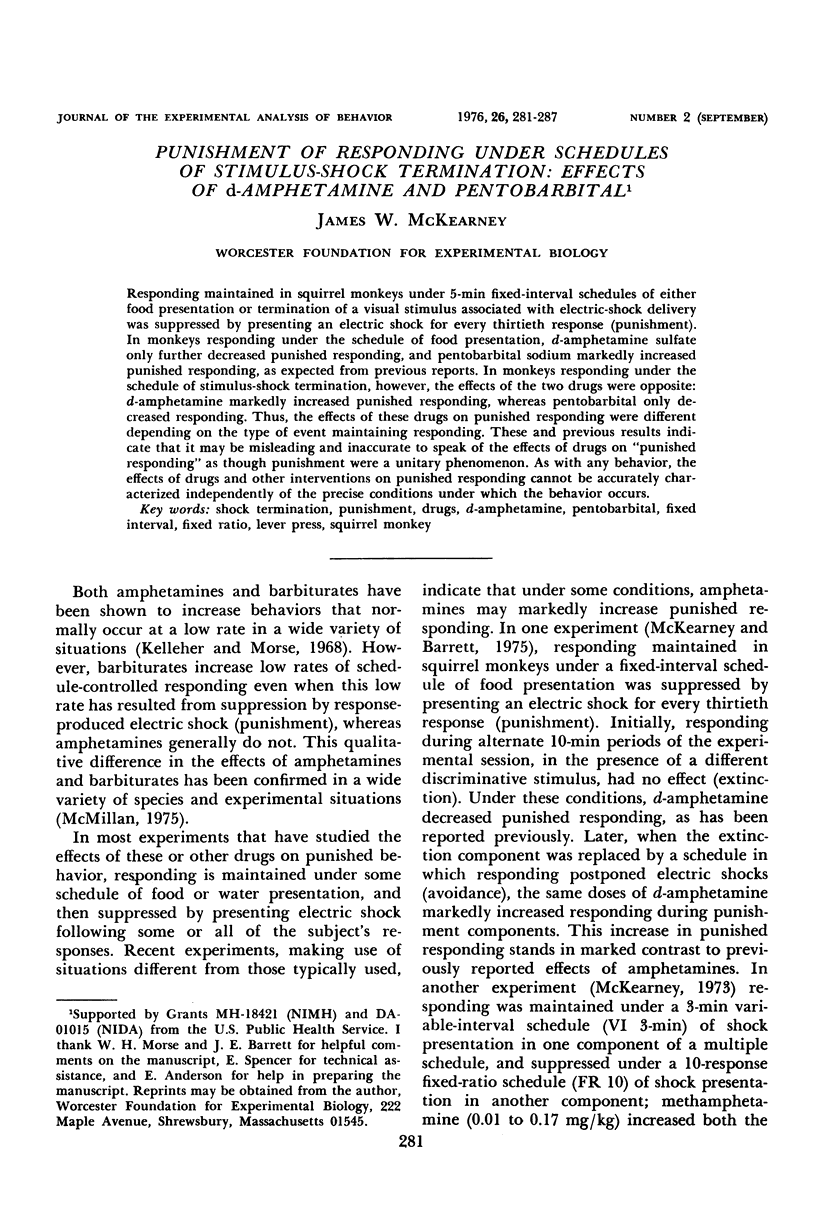
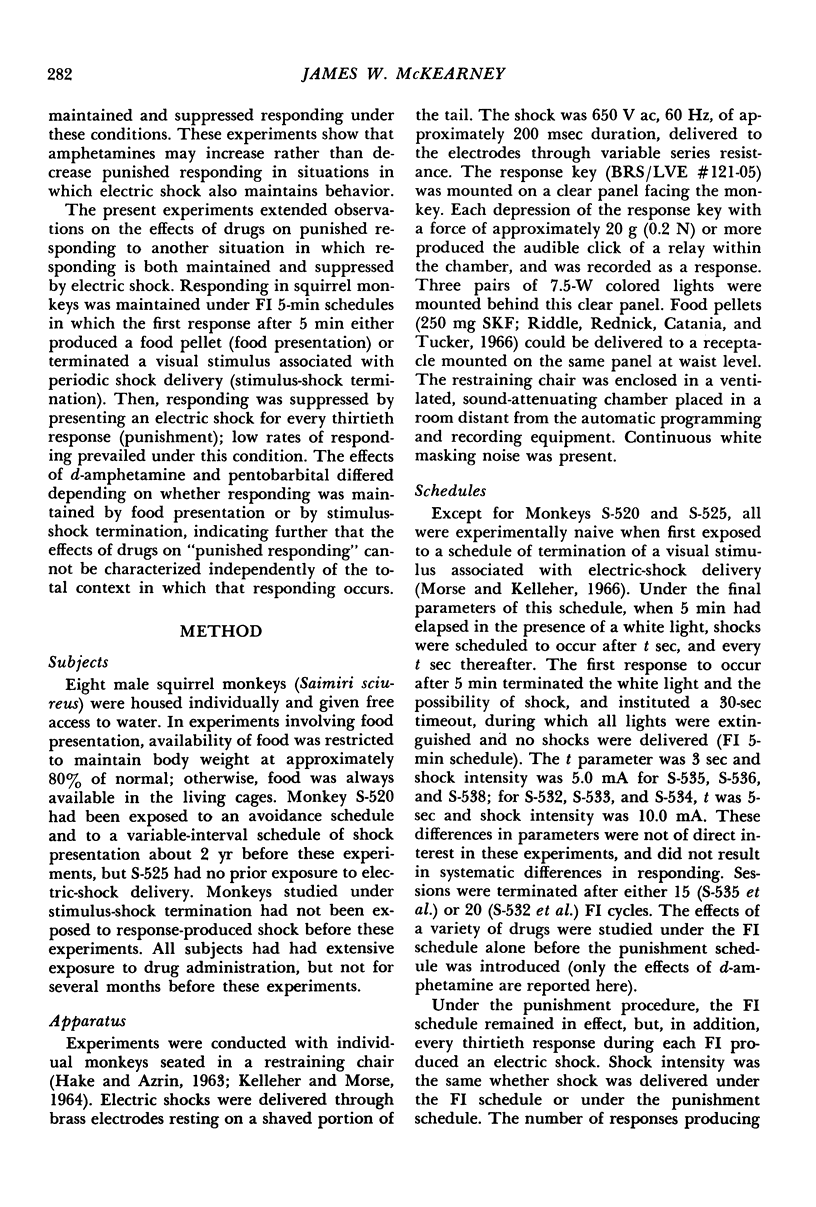
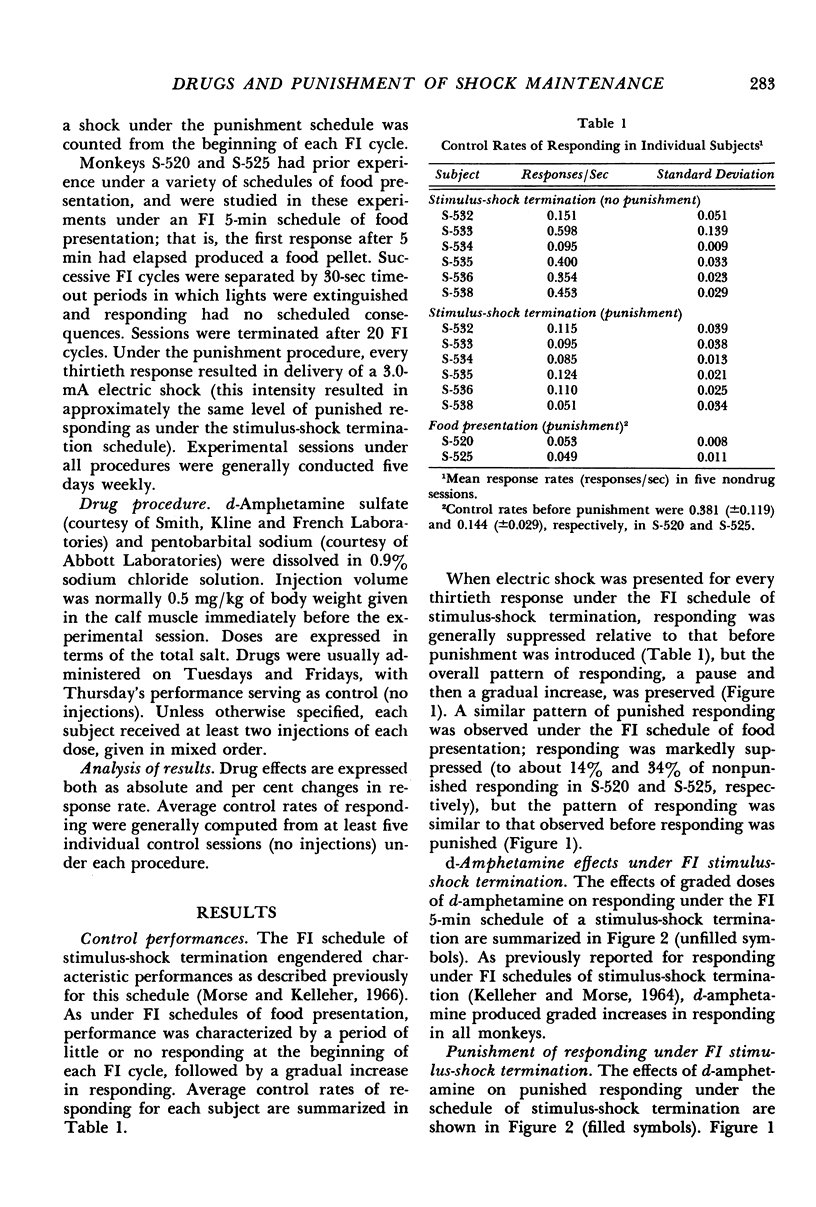
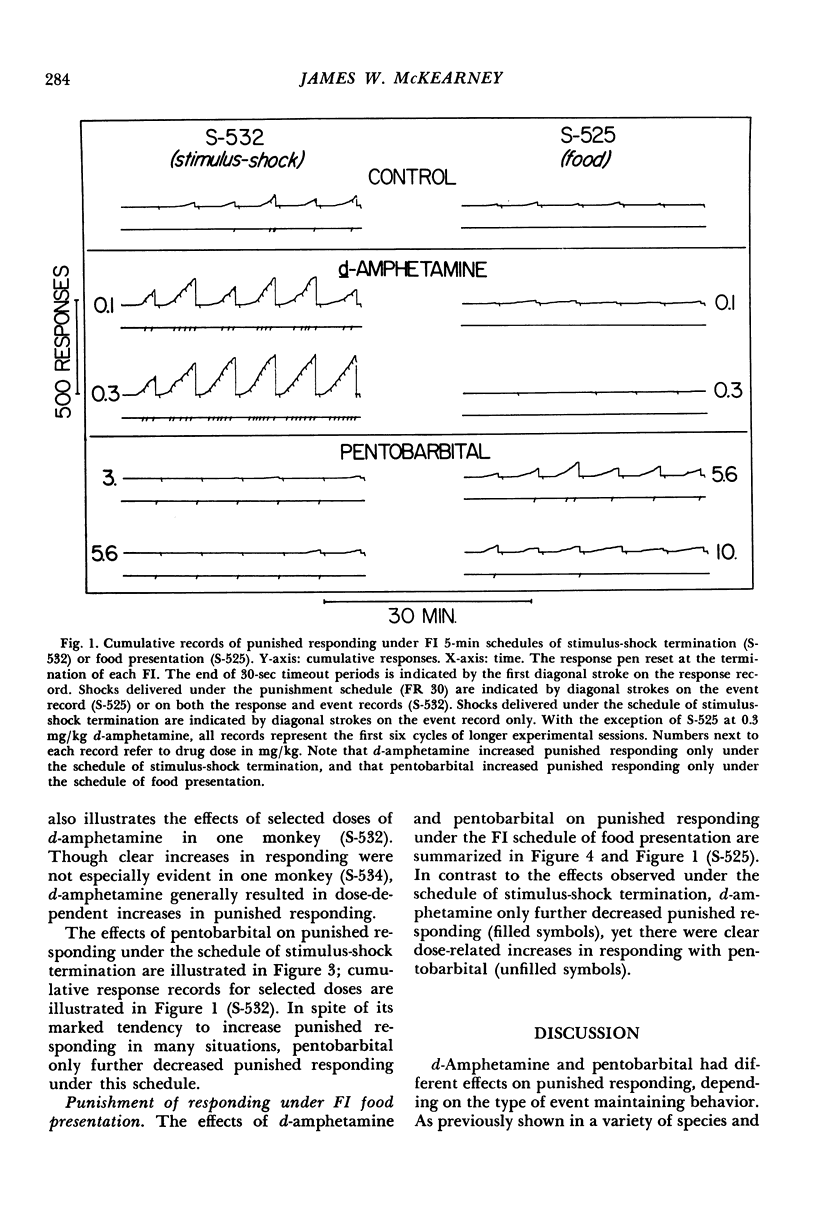
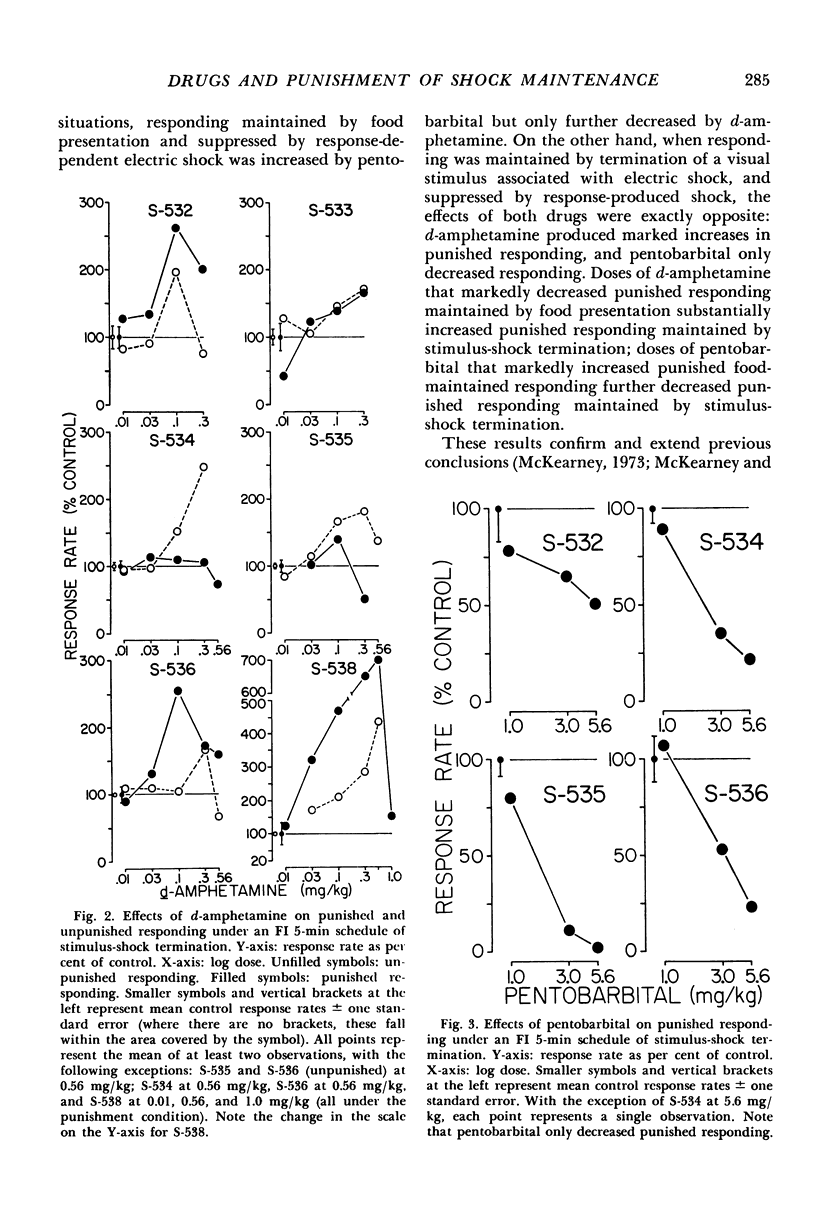
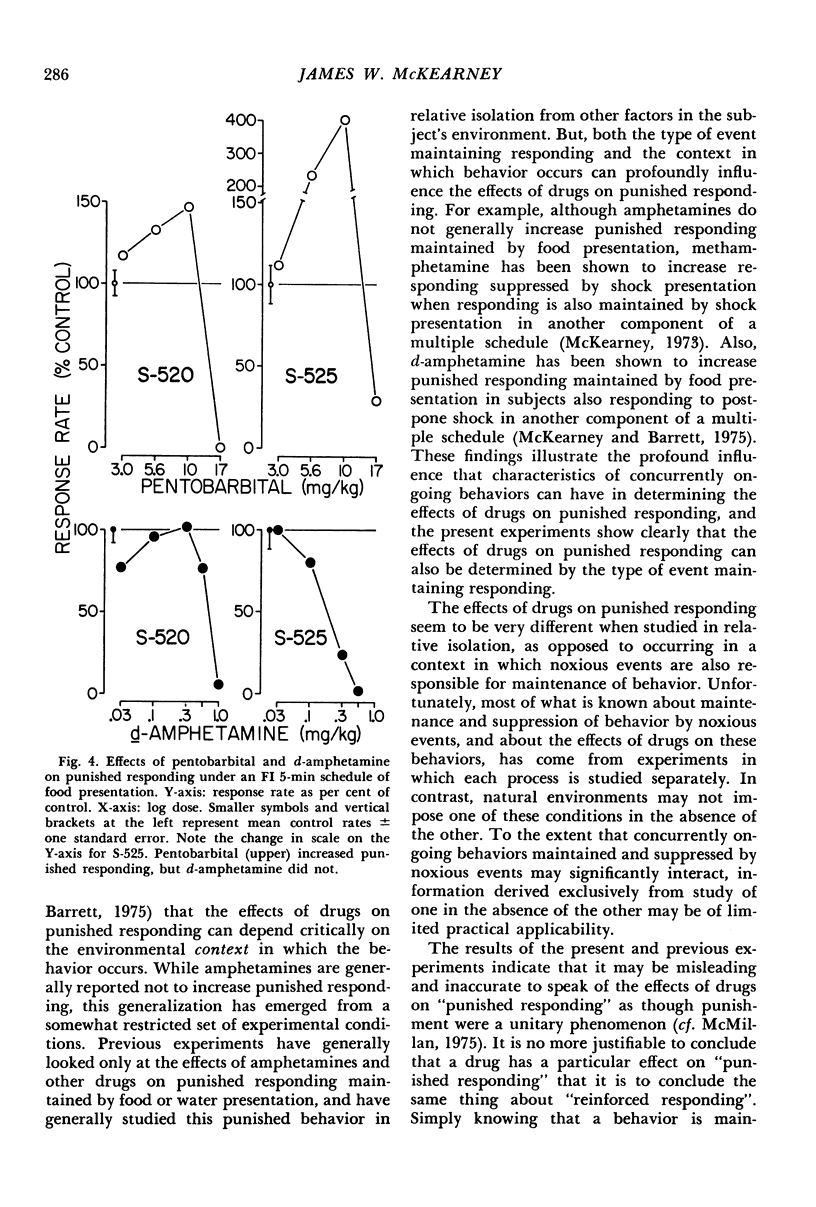
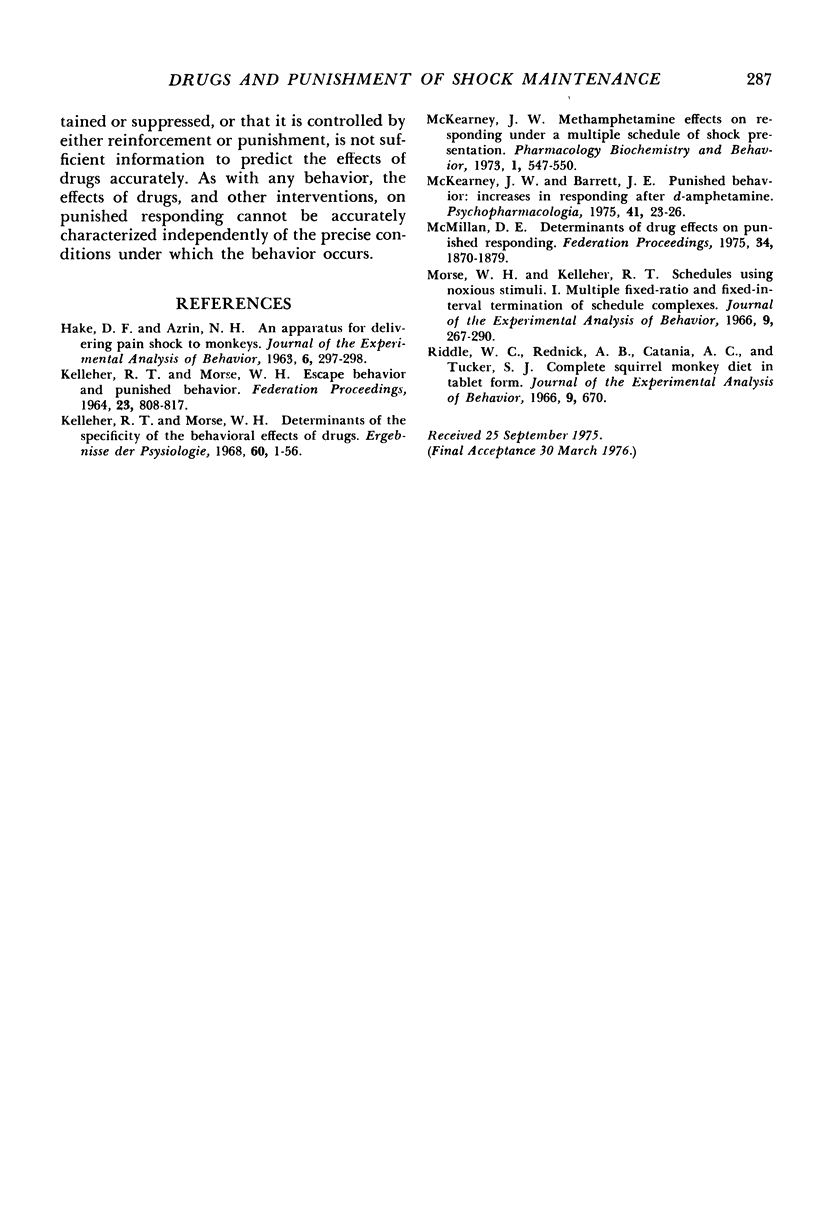
Selected References
These references are in PubMed. This may not be the complete list of references from this article.
- HAKE D. F., AZRIN N. H. An apparatus for delivering pain shock to monkevs. J Exp Anal Behav. 1963 Apr;6:297–298. doi: 10.1901/jeab.1963.6-297. [DOI] [PMC free article] [PubMed] [Google Scholar]
- KELLEHER R. T., MORSE W. H. ESCAPE BEHAVIOR AND PUNISHED BEHAVIOR. Fed Proc. 1964 Jul-Aug;23:808–817. [PubMed] [Google Scholar]
- Kelleher R. T., Morse W. H. Determinants of the specificity of behavioral effects of drugs. Ergeb Physiol. 1968;60:1–56. doi: 10.1007/BFb0107250. [DOI] [PubMed] [Google Scholar]
- McKearney J. W., Barrett J. E. Punished behavior: increases in responding after d-amphetamine. Psychopharmacologia. 1975;41(1):23–26. doi: 10.1007/BF00421301. [DOI] [PubMed] [Google Scholar]
- McKearney J. W. Methamphetamine effects on responding under a multiple schedule of shock presentation. Pharmacol Biochem Behav. 1973 Sep-Oct;1(5):547–550. doi: 10.1016/0091-3057(73)90079-8. [DOI] [PubMed] [Google Scholar]
- McMillan D. E. Determinants of drug effects on punished responding. Fed Proc. 1975 Aug;34(9):1870–1879. [PubMed] [Google Scholar]
- Morse W. H., Kelleher R. T. Schedules using noxious stimuli. I. Multiple fixed-ratio and fixed-interval termination of schedule complexes. J Exp Anal Behav. 1966 May;9(3):267–290. doi: 10.1901/jeab.1966.9-267. [DOI] [PMC free article] [PubMed] [Google Scholar]
- Riddle W. C., Rednick A. B., Catania A. C., Tucker S. J. Complete squirrel monkey diet in tablet form. J Exp Anal Behav. 1966 Nov;9(6):670–670. doi: 10.1901/jeab.1966.9-670. [DOI] [PMC free article] [PubMed] [Google Scholar]


